ON A MISSION TO REDUCE OUR CARBON
Our Sustainability Action
We are a market-leading supplier in the construction industry. So we must take up the climate change challenge by being a leader in the fight against carbon pollution.


Our Journey
These are four key steps we are taking in our carbon zero journey. Each step provides an opportunity to positively impact the environment. We encourage all businesses to progress on their own sustainability journey.

Replaced gas powered forklifts in the warehouse
Why use fossil fuel-powered forklifts when fully electric alternatives were available? Making the switch saved 5 tonnes of carbon per year.
Changed our car fleet to be 100% electric
We replaced our entire fleet of petrol vehicles with electric cars—Nuralite went 100% electric, powered by Teslas. This change saved 50 tonnes of carbon annually, and the team loved the switch to EVs.

STEP 1
How did we get rid of our fossil fuel purchases?
We identified every purchase of gas & fuel and invested in technology to substitute it.


Changed to a renewable power supplier
By joining Ecotricity, we switched to a 100% renewable power supply. This simple change not only saved us money but also reduced our carbon footprint by 5 tonnes per year.
Warehouse established in Christchurch
After analysing our transport data, we found that imported products were frequently being trucked from Auckland to the South Island. To address this, we established a warehouse in Christchurch, allowing us to import product directly. This change reduced trucking emissions by 15% with minimal impact on sea freight emissions, saving an estimated 5 tonnes of carbon per year. An added benefit is improved service for our South Island customers.

STEP 2
How did we reduce carbon in our
supply chain?
The potential carbon savings were significant, but achieving them required more creative thinking.
Reduced air freight by carrying more stock
Air freight deliveries previously cost us 70 tonnes of carbon per year—more than the entire impact of our petrol vehicle fleet. To reduce this, we began increasing stock levels in our warehouses instead of relying on air freight to meet demand. This shift significantly lowered our carbon footprint while maintaining high customer satisfaction.

Running buildings consumes a lot of energy and produces carbon emissions. Upgrading 1,200 commercial buildings could save as much power as all of New Zealand’s wind farms generate.
Warm roofs are a smart way to improve energy efficiency. They provide continuous insulation with no gaps, making them ideal for any building—especially low-energy homes. They can also be added to existing roofs to boost performance and extend lifespan.
“The installation of a correctly designed warm roof in New Zealand can save the building owner approximately 15 per cent in energy usage compared with a traditional cold roof."
- ArchitectureNow








